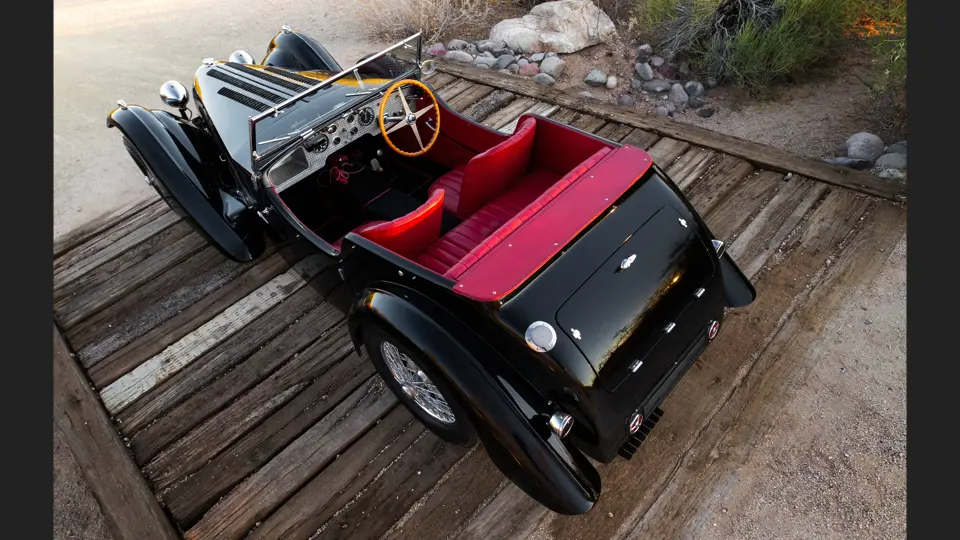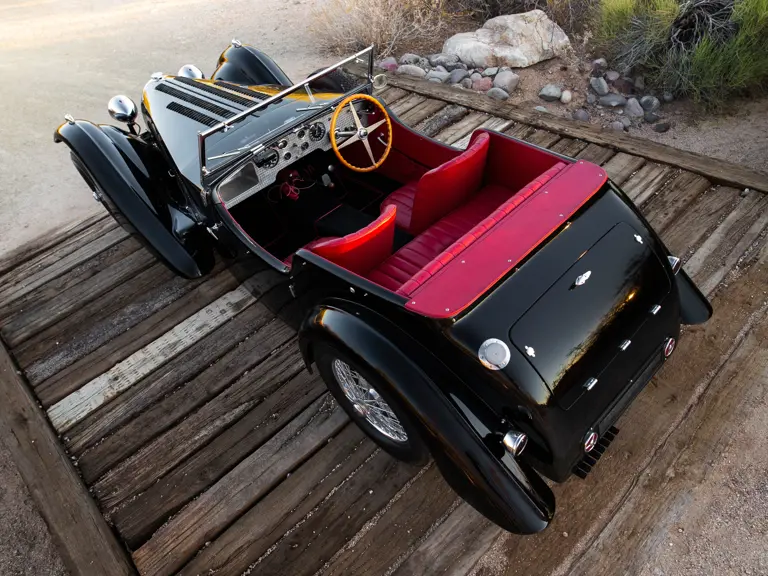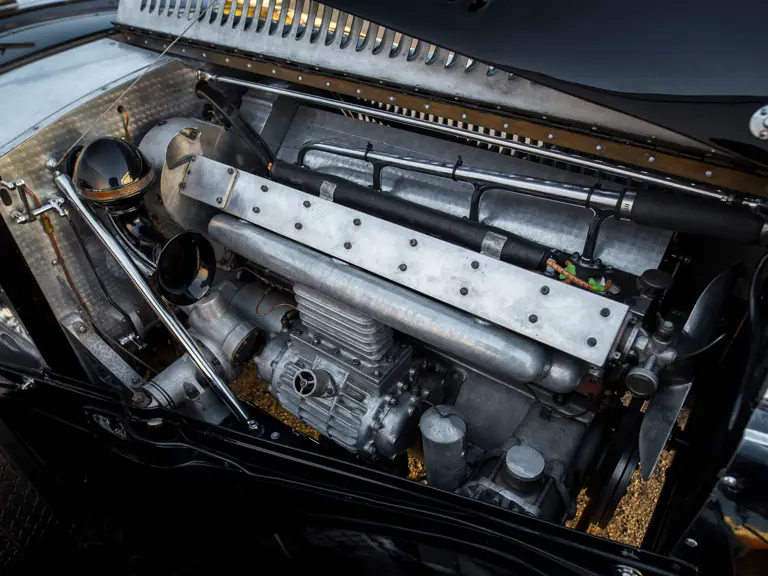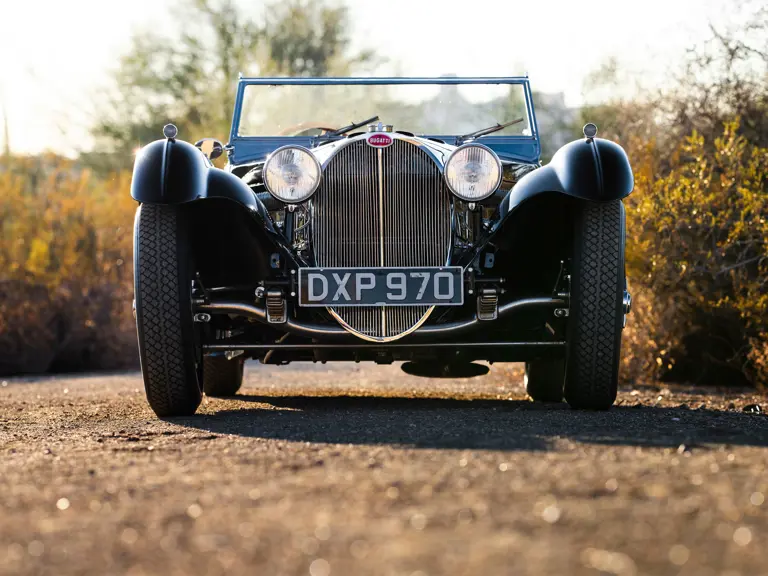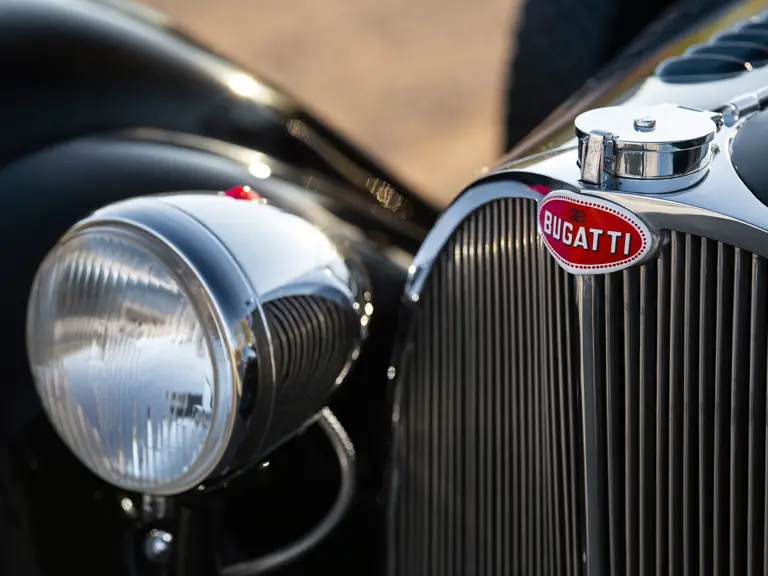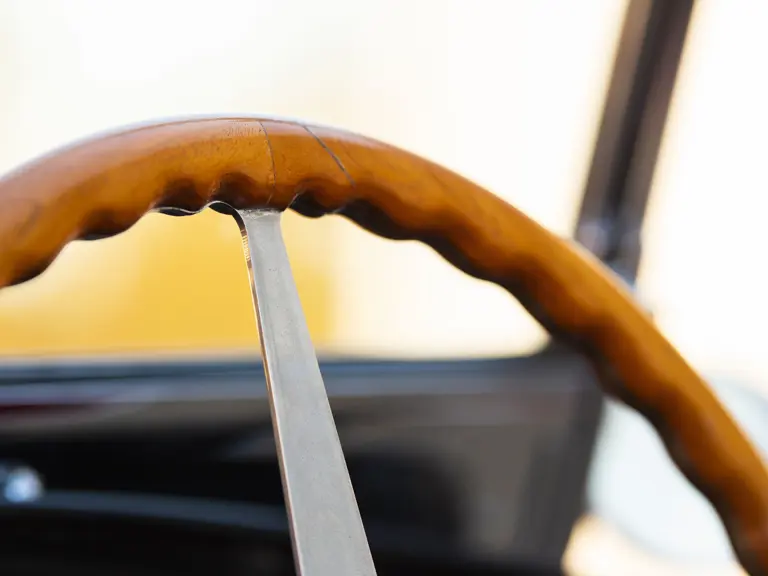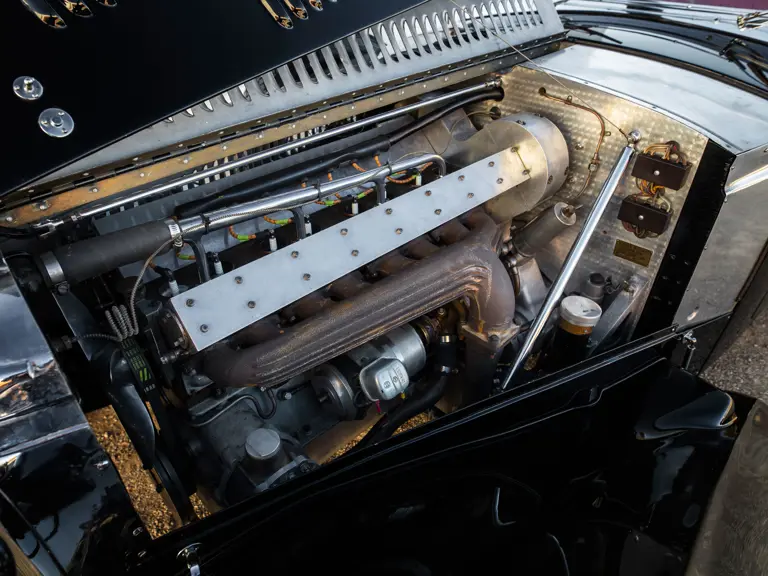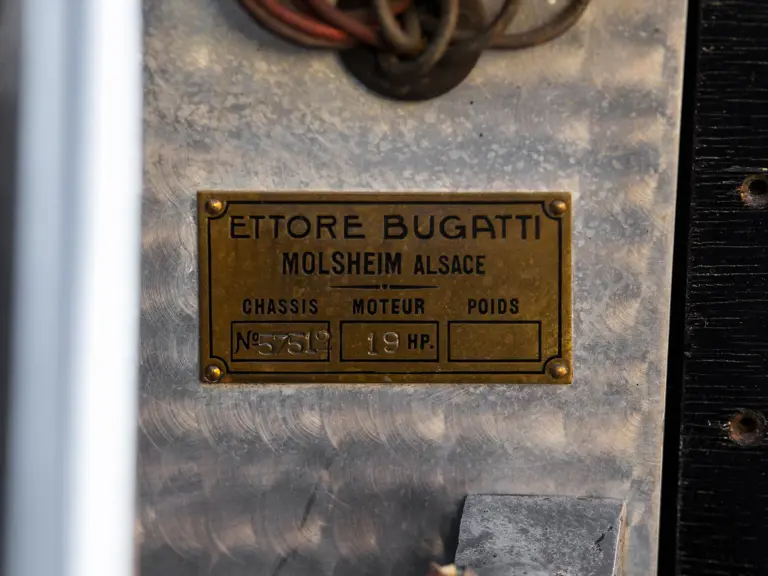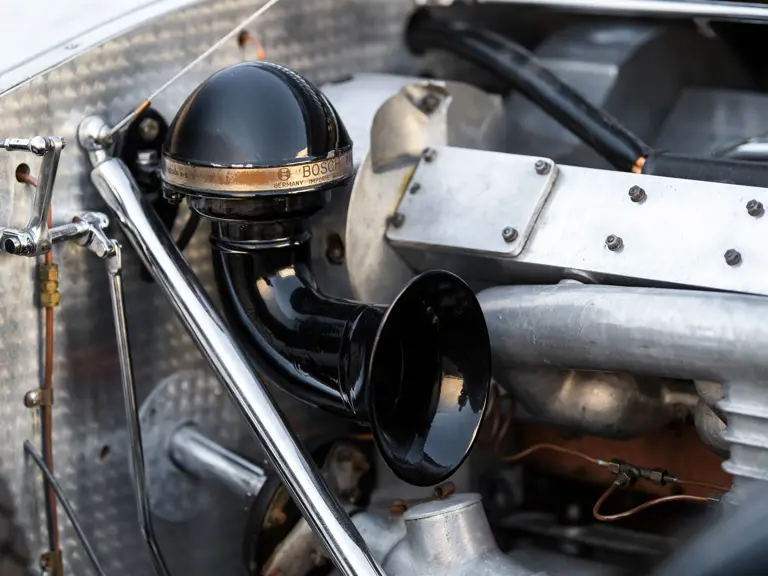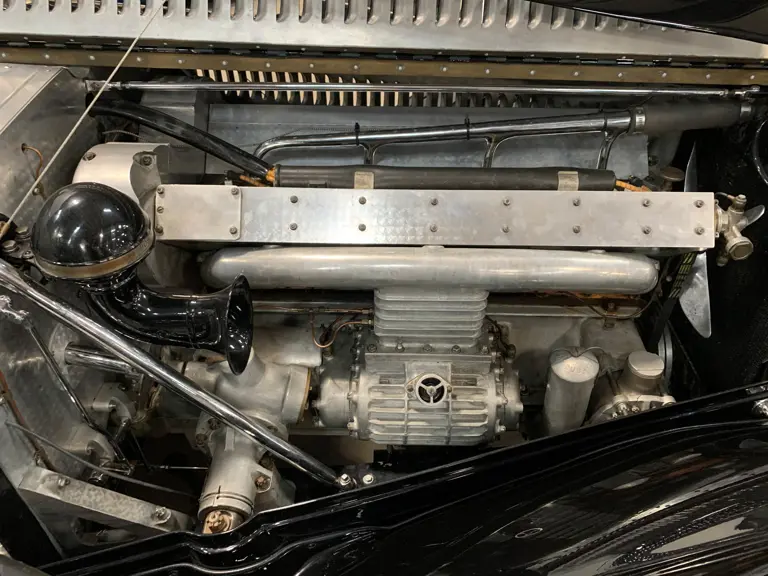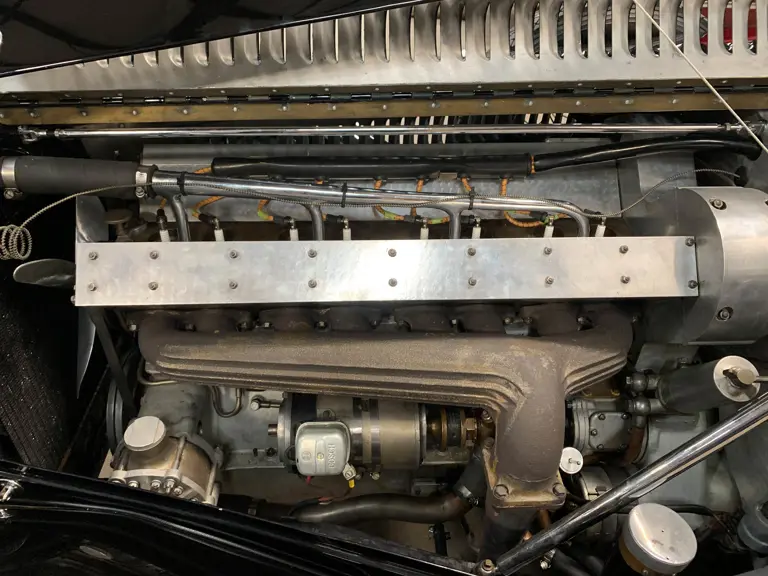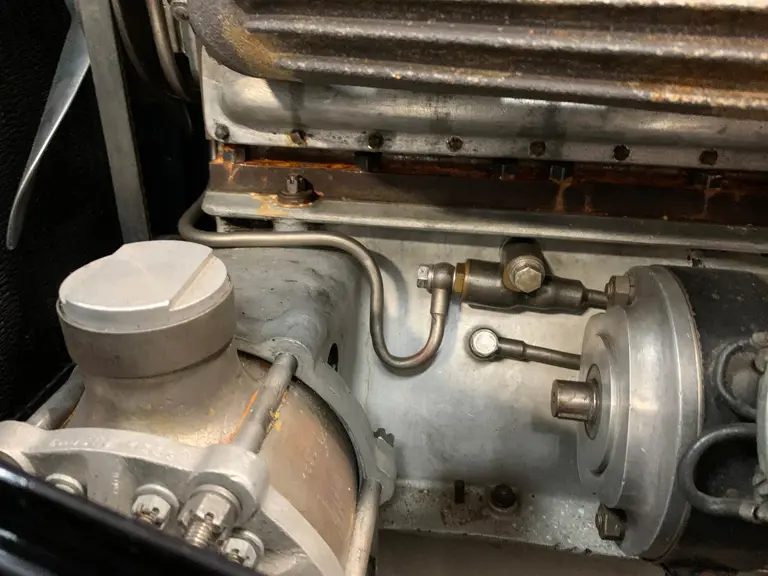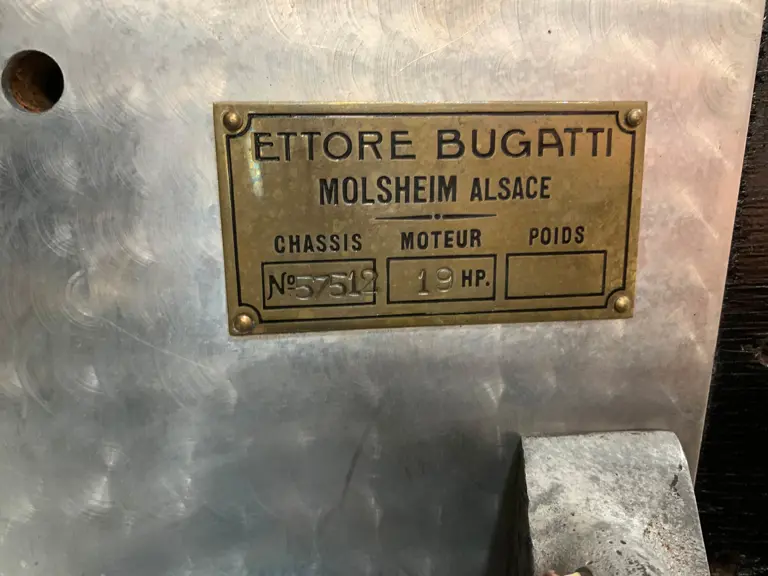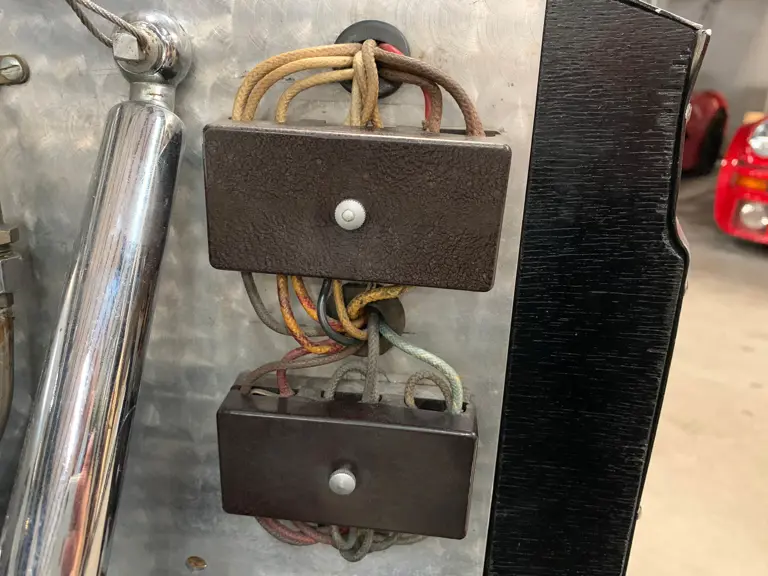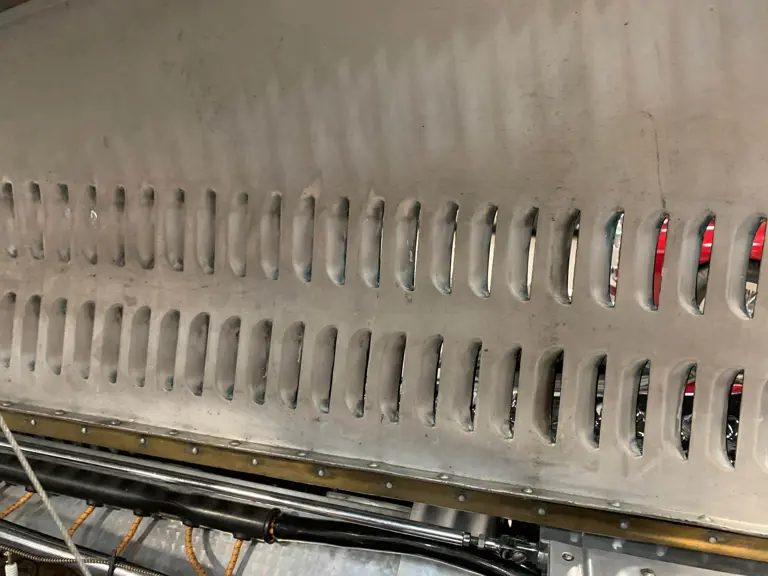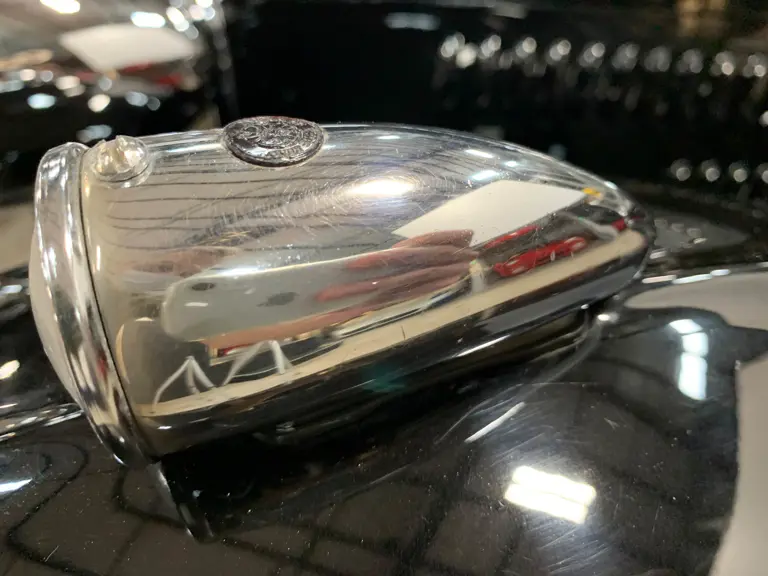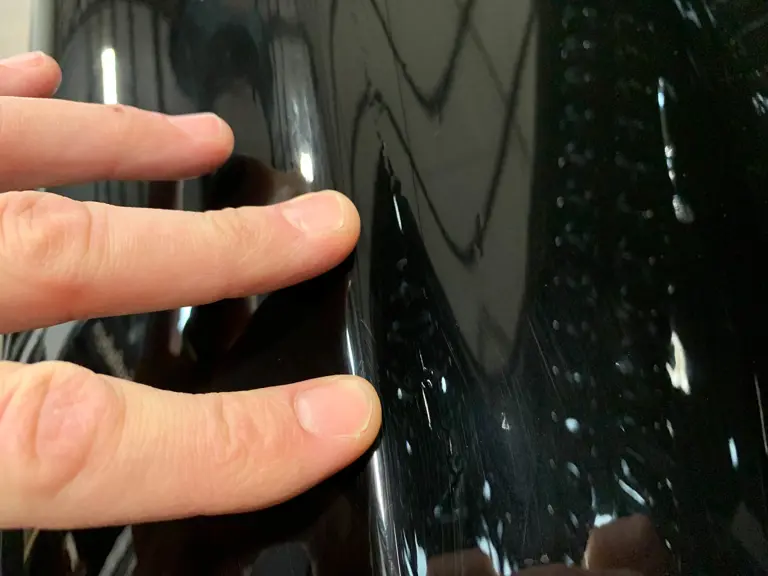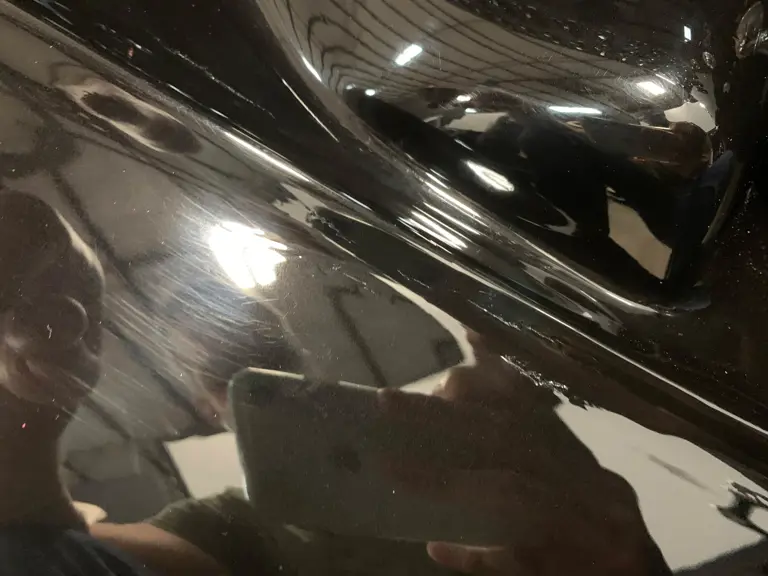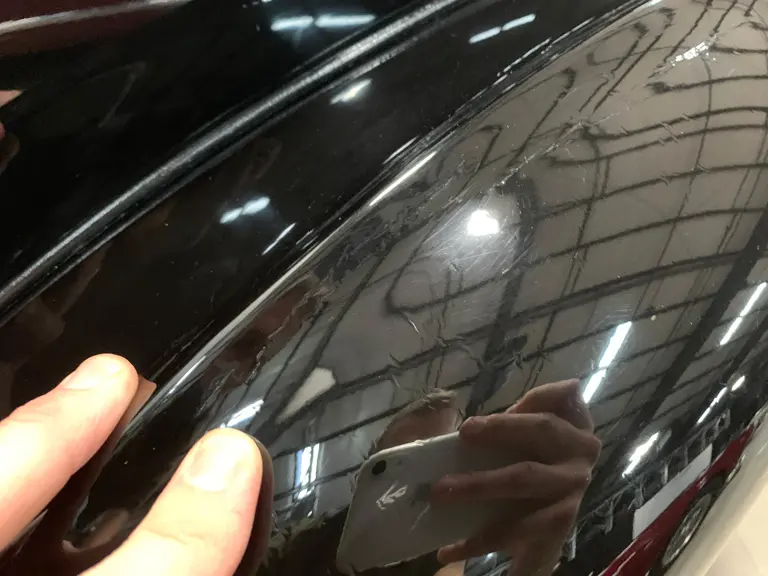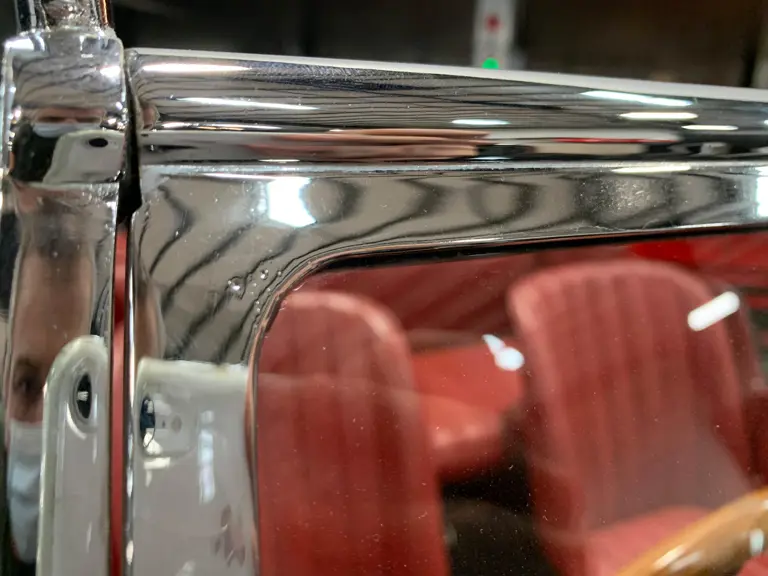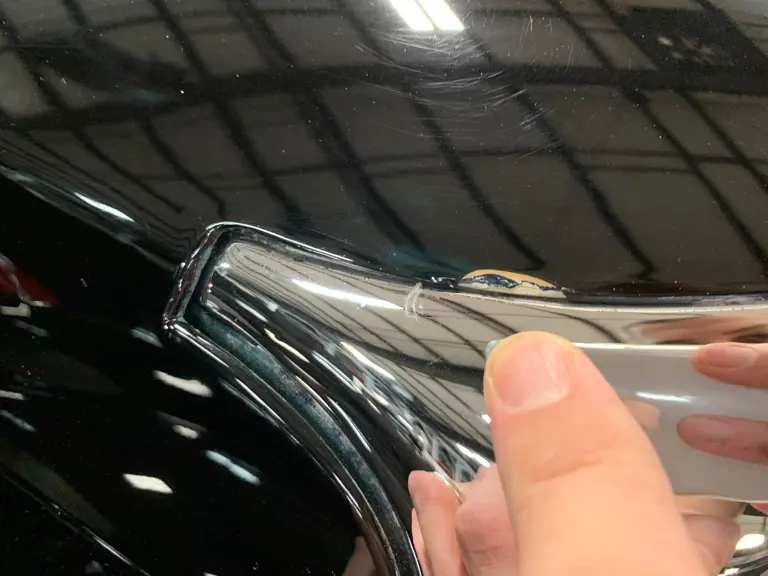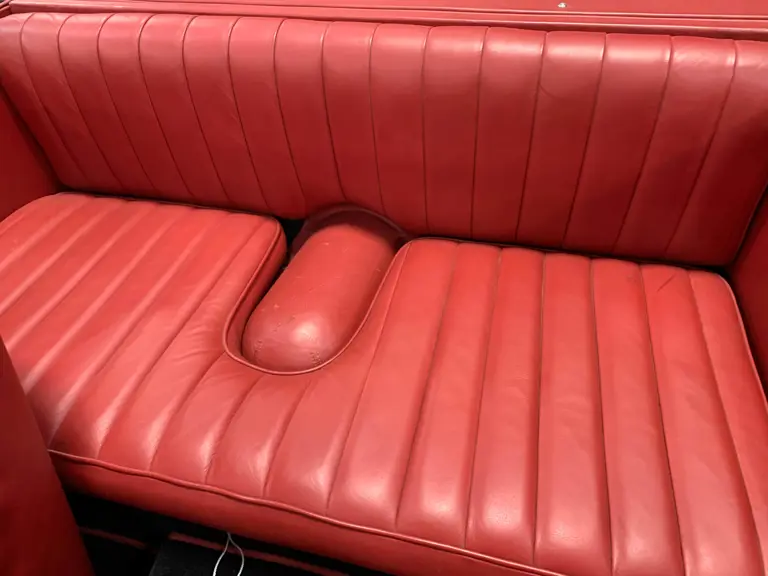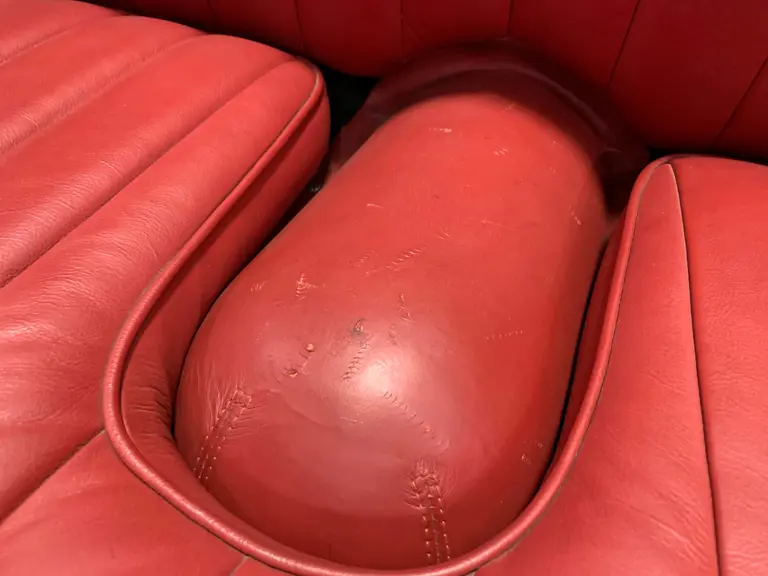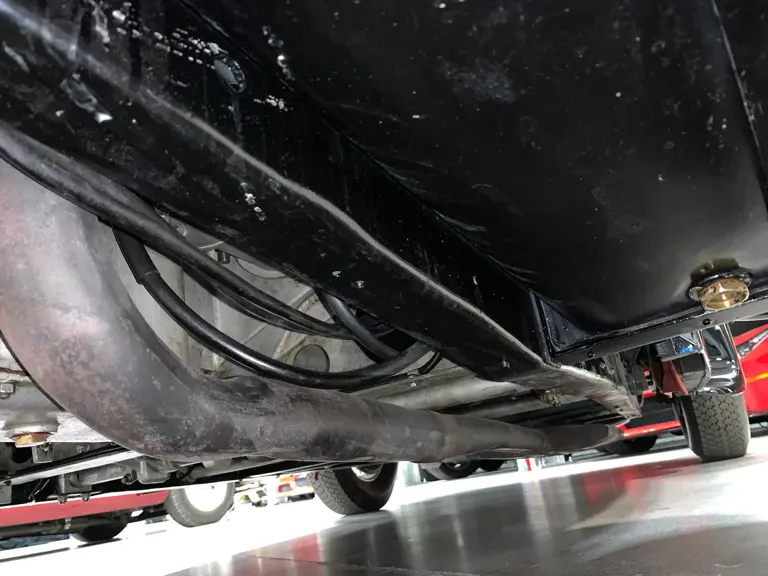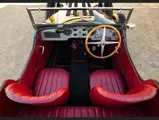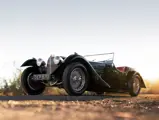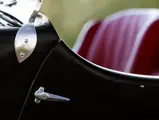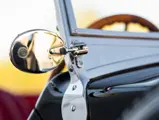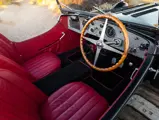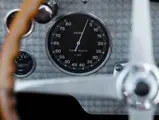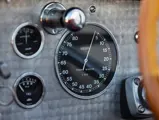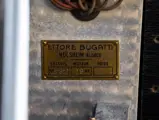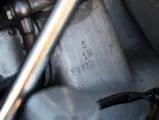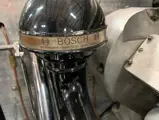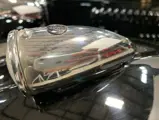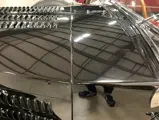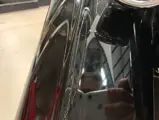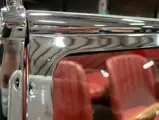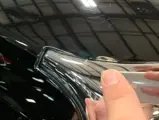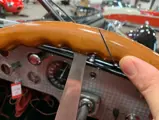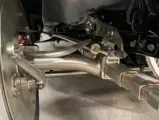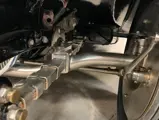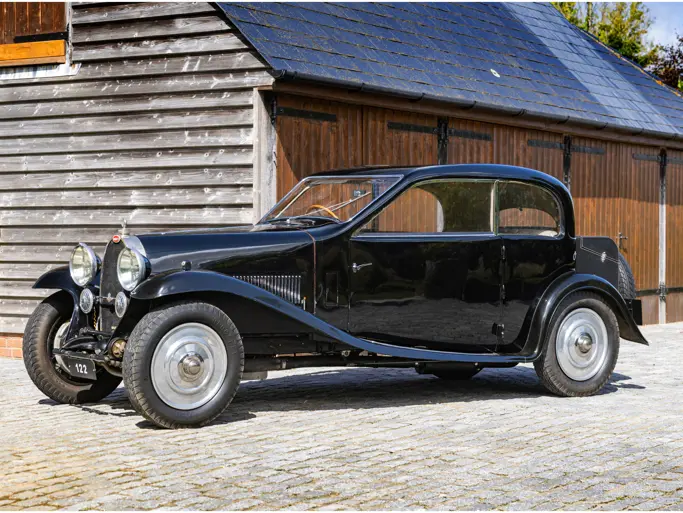
1937 Bugatti Type 57SC Tourer by Corsica
{{lr.item.text}}
$4,735,000 USD | Sold
{{bidding.lot.reserveStatusFormatted}}
- Retains its original chassis, engine, gearbox, differential, and body
- One of eight Type 57S examples bodied by Corsica, and only two four-seat tourers
- Only 16 Type 57S Bugattis delivered with open coachwork
- Known and fascinating ownership history
- Formerly of the Judge North and General Lyon collections
- Documented in Pierre-Yves Laugier’s and Bernhard Simon and Julius Kruta’s seminal books on the model
THE IDEAL EXPRESSION OF ‘PUR SANG’
The cars of the great Ettore Bugatti came in many shapes and sizes, from petite, highly effective grand prix racers to large, elegant touring cars—to say nothing of the enormous Bugatti Type 41 Royales. All shared a reputation for precision engineering and craftsmanship often, and not unjustifiably, compared to that of the finest Swiss timepieces; their chassis served as canvasses for some of the most beautiful automotive designs ever created.
Arguably no Bugatti model expressed each of the marque’s celebrated qualities as effortlessly as the Type 57S. Introduced at the Paris Auto Salon in October 1936 alongside the supercharged Type 57C, the 57S was an evolution of Jean Bugatti’s successful Type 57 design. Built upon a completely re-engineered chassis that was both shorter and lower (the S standing for surbaisse, French for “lowered”), the Type 57S used a front axle that was articulated in halves, while the rear axle passed through the frame rather than under it for a lower overall stance. A magneto-driven ignition was mated to the specially tuned 3.3-liter dual-overhead cam inline-eight-cylinder engine, which featured a higher compression ratio of 8.5:1 and was positioned low in the frame; a dry sump oiling system helped achieved proper road clearance. This low-slung chassis was then fitted with an equally low-mounted radiator that wore a handsome V-shaped grille in the classic Bugatti motif for, as might be presumed, its aerodynamic effect at high speed.
This potent combination added up to a significant increase in both horsepower and overall performance over the typical Type 57 engine and chassis. The 57S now boasted 175 horsepower versus the standard Type 57 output of 135 horsepower, and when adding the available “C” specification Roots-type supercharger power output was raised to 200 horsepower. This enabled a top speed of some 120 mph, making Bugatti the fastest French production car of the period and further burnishing the marque’s reputation for thoroughbred performance.
The Type 57S soon proved itself in competition, claiming three victories during 1936 (the French Grand Prix, La Marne Grand Prix, and the Comminges Grand Prix). Bugatti’s greatest success on the track was soon to come when a groundbreaking aerodynamic version of the 57S called the 57G “Tank” won the 24 Hours of Le Mans in 1937. Overall victory at Le Mans was later repeated by a second incarnation of the Tank in 1939, among many other competition successes.
If there is one further quality shared by all Bugatti automobiles, it is the unusual passion they have inspired in those who have pursued them. This as is true of those who first commissioned their construction at Bugatti’s Molsheim works—a process that more closely resembled the classic artist/patron relationship than it did the typical automaker/client transaction—as it is of those later enthusiasts who have gone to great lengths to preserve the Pur Sang legacy. This special dynamic is evident in the story of the car presented here: Chassis number 57512, a 1937 Bugatti Type 57SC Tourer by Corsica.
BUGATTI CHASSIS NUMBER 57512
Excellence in competition was, of course, only one facet of the Type 57S’ appeal; as a luxurious, high-performance road car, the Type 57S would benefit from some of the greatest coachbuilt designs of all time. While most bodies were supplied by French firms such as Gangloff (a favorite for carrying out some of Jean Bugatti’s best-recognized designs), Vanvooren, or Bugatti’s own Works, British coachbuilders such as Vanden Plas and Corsica also applied their trade to the 57S with perhaps as many as 15 chassis slated for delivery to England. Ultimately, only 16 Type 57S chassis would be built as open cars, with this Tourer by Corsica being one of them.
Corsica Coachworks was established at Kings Cross, London, in 1920 by Charles Stammers and his brothers-in-law, Joseph and Robert Lee. A relatively small operation, the firm claimed not to have employed designers, preferring instead to directly carry out its customers’ devices and desires. Because Corsica was small and could intimately cater to its customers’ whims, the workshop attracted many of the sporting crowd. While little is known of the early 1920s Corsica output, a good deal of it is believed to have involved Bentley.
The early 1930s brought some of the best-known Corsica coachwork, including a low-slung sports body for the Double-Six 50 Daimler and an open two-seater for Donald Healey’s 1935 Triumph Dolomite, by which time the Works had moved to Cricklewood. In addition to traditional British marques, Corsica also worked on Continental chassis, mainly Alfa Romeo and Mercedes-Benz. Later on, more than a dozen Type 57 Bugattis were bodied by Corsica, including a 57S roadster style body for Sir Malcolm Campbell, the Grand Prix driver and land-speed record holder, and the monumental 57S roadster created for Colonel Giles, who affectionately referred to this masterpiece as “La Petite Suzanne.” Like many of the bespoke builders, Corsica closed its doors during World War II, never to re-open.
Corsica built a total of only eight bodies on the Type 57S chassis, including four two-seat roadster bodies (including the Sir Malcolm Campbell and La Petite Suzanne cars), two closed car bodies (of which one example no longer survives), and two four-seat tourer bodies. Chassis 57512 was the second four-seat tourer commissioned, with each being uniquely constructed to show obvious variations from one chassis to the other. The first chassis, no. 57503, abruptly ends the curve of the fenders just behind the wheels, while proudly displaying the oil tank just behind the left front wing.
The example offered here extends the length of the fenders front and rear to gracefully hide the oil tank and visually lengthen the car for a dramatic finish to the rear profile. The configuration of the side-mounts was also treated differently for both examples, with the spare suspended mid-flank on 57503 rather than carefully crafting the side-mount into the extended driver side fender as is seen on this car.
A WELL-LOVED AND FORTUNATE TYPE 57S
The history of this 57S begins with the delivery of its chassis on 8 March 1937 to Colonel Sorel at the Bugatti agency in London for Mr. Hubert Papworth, known for running a Bugatti tuning service in Fulham, London. The chassis was then taken to the Corsica Coachworks to have the open four-seater tourer body fitted. Soon after completion, 57512 was delivered to its first owner Mr. Maurice Fox-Pitt Lubbock, who registered the Bugatti in London with license DXP 970 in March 1937. Maurice Lubbock’s name was listed in the March issue of Bugantics when he joined the B.O.C. Club, which also congratulated him on the purchase of his new Type 57S Bugatti.
Mr. Maurice Fox-Pitt Lubbock was a close friend of Jean Bugatti, who frequently drove him along the tight vineyard roads in Alsace at a very high rate of speed each time Mr. Lubbock visited the factory. Perhaps due in part to Jean’s driving inspiration, Maurice also enjoyed exercising his new Bugatti in a spirited manner, even when carrying the family at speeds of 100 mph or better. One can imagine the heartbreak Maurice Lubbock experienced when he was forced to sell his prized Bugatti after being elected president of Rolls-Royce, approximately 10 years after he first took delivery. It is around this period that a photograph was taken of the car surrounded by eight other Bugattis including three additional 57S models in front of the Continental Cars Ltd. garage in Surrey.
By the time 57512 was sold directly from Lubbock to its next owner, Leonard Potter, the car had been fitted with a factory Roots-type supercharger. Some historians, including Julius Kruta, have reported that the car was upgraded to 57SC specifications at the factory in 1939, while others, such as Pierre-Yves Laugier, suggest it may have been supercharged while in the service of Continental Cars. At any rate, 57512 was upgraded to the ultimate supercharged specification early in its life. Only two cars are known to have been fitted from the factory during production with superchargers, rendering them 57SC examples. The vast majority of Type 57SCs were upgraded to supercharged specification sometime after their initial delivery, with a number of examples being retrofitted decades later.
The car was sold once again by a London garage called “Speed Models,” as was reported by The Autocar magazine dated 24 February 1950. The car was shipped to a Mr. Thomson in New York, who administered the sale to an advertising executive named Walter Stocklin. While in the hands of Stocklin, 57512 was raced at Long Island, Bridgehampton, and Watkins Glen during the early 1950s. By 1955, Stocklin apparently decided he would like for his Bugatti to possess all of the characteristic of a Grand Prix race car and had the original Corsica coachwork removed and replaced with a simple two-seater racing-style body constructed by Hiram Hillegas. Stockton used the car sparingly after the modifications took place and the car was sold five years later in 1960 to the esteemed collector Judge John North of Easton, Maryland. Judge North discovered the car listed for $3,800 in a classified advertisement while reading the New York Times. Thankfully, the original Corsica four-seat Tourer coachwork was included in the purchase.
Judge North recalled that the body still carried its original Corsica plates on the coachwork and under the doors. However, he owned a number of Bugattis and other classics and decided to keep the Hillegas Grand Prix-style coachwork on chassis 57512. North sold the Corsica coachwork in the mid-1960s to Allen Henderson, who intended to install the body on a much later Bugatti chassis with longer dimensions than what the Corsica body was designed to accommodate. As such, Henderson resold the coachwork to Walter Weimer after buying two more Bugattis from North. Weimer in turn sold the body to Ray Jones of Michigan, long known for collecting Bugatti chassis, bodies, and spare parts. Jones passed the body to Lynn Steele from North Carolina, who ultimately sold the body back to Judge North along with a modified Bugatti chassis and a spare 57SC engine, no. 23S.
Judge North assembled a complete Bugatti 57SC using the original Corsica coachwork from 57512, the modified chassis and 57SC engine purchased from Lynn Steele, and a number of spare components sourced from Ray Jones. The “replica” was then sold to Count Hubertus von Donhoff of Germany in 1986. Judge North reacquired the assembled 57SC from Count Donhoff in 1998 and reunited chassis 57512 with its original Corsica coachwork after 43 years of being separated. North sold 57512 to General Lyon soon thereafter, who in turn passed the car on to the Blackhawk Collection.
In the hands of the Blackhawk Collection, a restoration was performed, and the car was displayed on the lawn at Pebble Beach in 2003 to much fanfare, after being exhibited publicly for the first time in nearly 50 years with its stunning original Corsica coachwork.
CHASSIS 57512’S NEXT CHAPTER
Chassis 57512, as it presents today, carries this restoration from its Pebble Beach debut. The restoration was carried out in a manner that preserved elements from both its original configuration and its later GP-style history, providing the new owner with the opportunity to enjoy it in its current state as an exceptional high-performance event car or further restore it to concours standards in its original elegant form as it left the Corsica Coachworks.
Notably, the frontend design was modified by removing the inner fender structure that surrounded the signature V-shaped grille and concealed a portion of the front chassis. It appeared as such under Hillegas’ ownership, which included the installation of the custom multi-louvered hood that it carries to this day. The original Corsica hood design featured an impressive single row of elongated louvers on the hood sides and a solid non-louvered hood top. The original firewall and inner front cowl section under the hood were both replaced, though the outer cowl that the windshield is mounted to and leads up to the edge of the hood is believed original. The oversized “Stephen Grebel” headlamps and single spotlight that the car featured during Mr. Lubbock’s ownership were substituted with more modern and efficient exterior lights by around the time it was shown at Continental Cars in the late 1940s. The original set of wheel discs were eliminated in favor of exposed wire wheels that were chromed during restoration, and the convertible top was removed at some point.
Thanks to the passion and diligence of past owners, chassis 57512 has survived to the present with its significant original mechanical components intact. It importantly features its original chassis, engine, gearbox, and differential, and its supercharger is believed to be the same one that was installed within the first few years of its life. The car’s fortunate reunion with its exceptionally rare, original, open-top Corsica coachwork further elevates its significance and appeal.
Equal parts elegant and athletic, this Type 57SC Tourer by Corsica embodies everything a Bugatti and sits at the very pinnacle of pre-war motoring; it benefits from well-documented history, along with the retention of its important original components. Worthy of a commanding position in any serious collection, chassis 57512 affords its next owner almost limitless opportunities for further restoration, touring and events, and exhibition at the highest levels.

